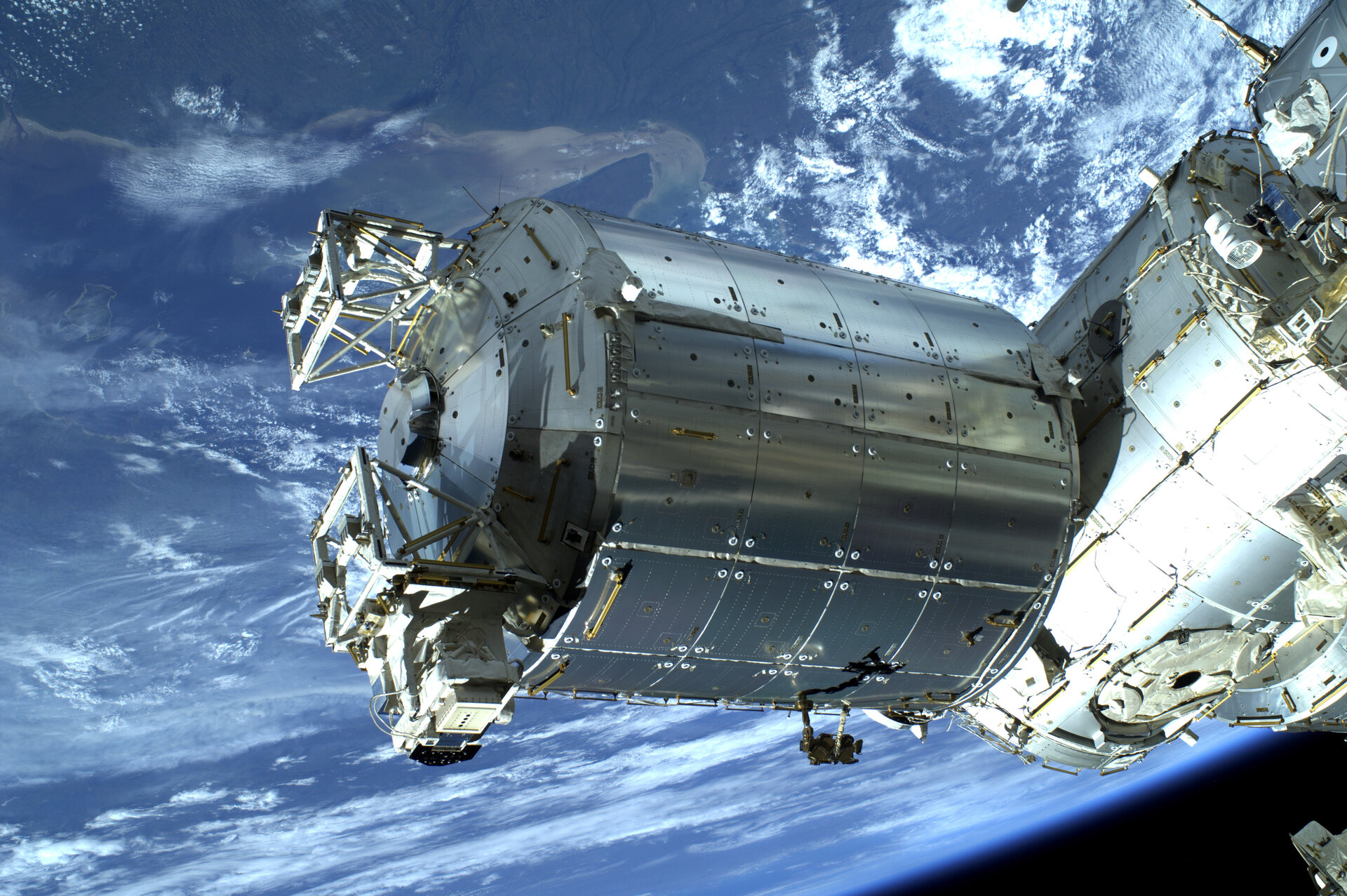Columbus module
The Columbus module consists of a cylinder with an inner diameter of 4216 mm and an overall length of 6137.2 mm, closed by a truncated end cone at each end. The cross–section is double symmetric with four identical stand–off envelopes accommodating the routing of utility lines and four identical rack envelopes spaced 90 degrees apart.
As part of the ISS, ESA’s Columbus module represents an element of a multi–functional, orbital infrastructure that generates and/or distributes the resources required for scientific and technological research in Low Earth Orbit (LEO). Columbus provides the capability for:
- the long–term continuous exposure of payloads to the microgravity environment and the capability for the systematic repetition and evolution of experiments;
- automatic, remotely controlled and interactive investigations involving orbit–based and ground–based crews composed of scientific, engineering and space operations personnel;
- the remote reconfiguration of the Columbus (and potentially the payloads) functional–electrical configuration based on optimised operations and redundancy concepts;
- a successive build–up and complementation of payloads based upon experiment results while using the logistics capabilities of the space transportation systems and the Columbus design features for Orbit Replaceable Units (ORU);
- in–orbit crew intervention for scientific preparatory, technical diagnostic, hardware configuration or recovery purposes when and as required.
Although aimed at basic research in the fields of material, fluid, biological and physiological sciences, the versatility and resources provided makes Columbus a suitable facility also for other fields of basic and applied sciences, process engineering and technology demonstration experiments.
Further information about the ISS can be found here.


